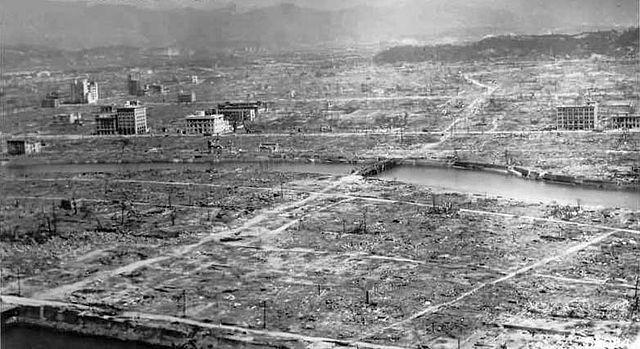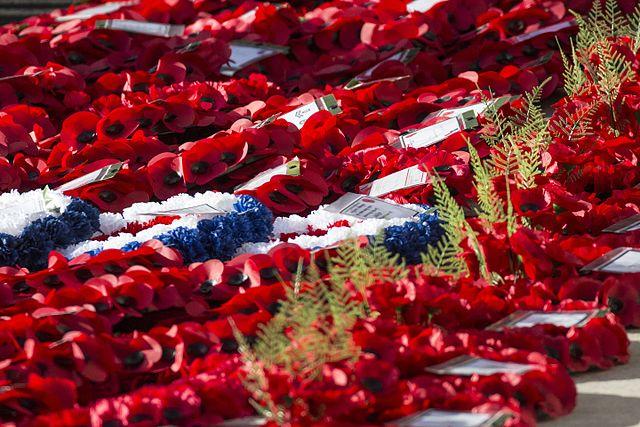Chapters
Officially starting in 1939, World War 2 plunged countries around the world into a devastating conflict that tore families apart, destroyed economies and forever changed the political climate of the time. Thankfully, this period in history would not last forever, and on September 2nd, 1945, the war would naturally come to a close - to the celebration of millions.
Out of the ashes of World War 2, many countries would emerge stronger, having finally thrown off the shackles of Nazi rule and other oppressive regimes. In this article, we’ll explore what factors led to the end of the war, as well as take a look at the impact the war had on civilians, the shifts in international relations between countries, and how WW2 is still remembered today. Join us on this fascinating journey into history.

What Key Events Led to the End of WW2?
The final years of World War 2 would see a series of events take place that led to its eventual conclusion. For instance, in Europe, the Allied Forces, who had recently been joined by the Americans in 1941, would go on to secure several important victories and steadily advance into their territory. The most important of all of these was the D-Day landings, which saw troops landing on the beaches of Normandy in a daring attempt to reclaim Nazi occupied Europe.
Thankfully, their efforts were successful and this turning point sparked the fire for the liberation of Paris, and eventually the fall of Berlin in May 1945. No longer able to fight back against the Allied forces, Nazi Germany rapidly began to collapse, bringing an end to hostilities across the majority of Europe.
Meanwhile, in the Pacific, the United States employed a unique island hopping strategy to heavily weaken the Axis aligned Japanese forces. The island-hopping strategy involved the U.S. selectively capturing key Pacific islands, establishing bases, bypassing strongholds, all while progressively moving closer to the empire of Japan. Sadly, this would come to a head in the controversial bombings of Hiroshima and Nagasaki in August 1945, leading to Japan finally giving up and surrendering.

What Was the Impact of the War's End on Civilians?
Although the end of World War 2 brought relief to millions, it also revealed the full extent of the damage it had caused worldwide. For example, in Europe, many cities were almost entirely destroyed, unfortunate victims of aerial bombings and on the ground warfare.
Alongside this, families on both sides of the war had lost loved ones and were grappling with the immense grief and trauma of their losses. Additionally, many children, especially young boys, had no choice but to step into the role left behind by their fathers or older brothers who had been killed in the war.
For the first time, many civilians would also be exposed to the grim reality of the Holocaust, a horrific crime by the Nazis that resulted in the deaths of millions of Jews and countless other minorities. This would then spark a refugee crisis, with millions of displaced men, women, and children seeking new homes and trying to rebuild their lives again. On the other hand, in Japan, the country was still reeling from the atomic bombings of Hiroshima and Nagasaki. Tens of thousands were killed, and many of the survivors who had been lucky enough to survive now faced living with life-changing injuries and the after-effects of radiation.

How Did Society Change After WW2?
After World War 2, society would undergo many meaningful transformations. One of the most important of these, was the shift in gender roles and the position of women in society. During the war, many women had taken up workforce roles that were left empty by men off fighting, and this had sown the seeds for future feminist movements that aimed to give women more equal rights.
Meanwhile, in the United States, the civil rights movement would also begin to pick up momentum too. Returning home from the war where they had fought tooth and nail for freedom, many African American veterans would continue to find themselves segregated from the rest of society, demanding equal rights and opportunities because of this. Elsewhere in the world, the end of World War 2 would also spur on colonised countries to seek and eventually gain their own independence, especially in Asia and Africa.
How Did the End of WW2 Affect the Economy?
The end of World War 2 would also have a pretty huge impact on the overall global economy as well, especially when it came to Europe. After years after years of relentless warfare, European countries were left with extensive infrastructural damage and weakened economies.
To help with this, the Americans introduced the Marshall Plan which provided countries with financial aid in the hopes of reviving their economy and helping them rebuild. The plan was a resounding success, and it wouldn't take long for Europe to get back on its feet. Additionally, having sustained very little damage to its homeland, America would also go on to experience an unprecedented economic boom.
This period in history saw a surge in industrial production and consumer demand, making the United States a global economic superpower in the process. Post-WWII, Japan's economy was also in ruins. Yet, under the United States guidance and through policies such as land reform and economic liberalisation, Japan eventually turned its fortunes around, becoming another key economic power.

How is World War 2 Remembered?
Today, we look back on World War II as a pivotal moment in history - a time when nations united to challenge the oppressive Nazi regime and its allies. In Europe, where the war's impact is still felt in many towns and cities, there are numerous memorials and museums dedicated to those who bravely fought against the Nazi and Axis oppression.
Additionally, in the UK, events like Remembrance Sunday and VE Day take place every year, honouring both the soldiers and civilians who took part. Across the sea, the United States also pays homage to American soldiers with memorials such as the National World War 2 Memorial in Washington.
In Japan, important landmarks like the Hiroshima Peace Memorial still exist as a reminder of the horrifying destruction war can cause and as a symbol of peace between nations.

Conclusion
In summary, World War 2 would ultimately come to an end due to several key moments, including the D-Day Landings and the Atomic Bombings of Hiroshima and Nagasaki. Whilst the end of the war brought relief for people all over the world, it also revealed the horrific extent of the war crimes the Nazis had caused. However, the aftermath of the would result in many beneficial changes too, such as the women and civil rights movements in America gaining traction.
Economically, the Marshall plan would help Europe recover from the devastation of the war, while the United States and Japan would eventually emerge as major powers. Today, WW2 continues to be remembered across the globe, through memorials, museums, and special events that honour the sacrifices of the fallen.








